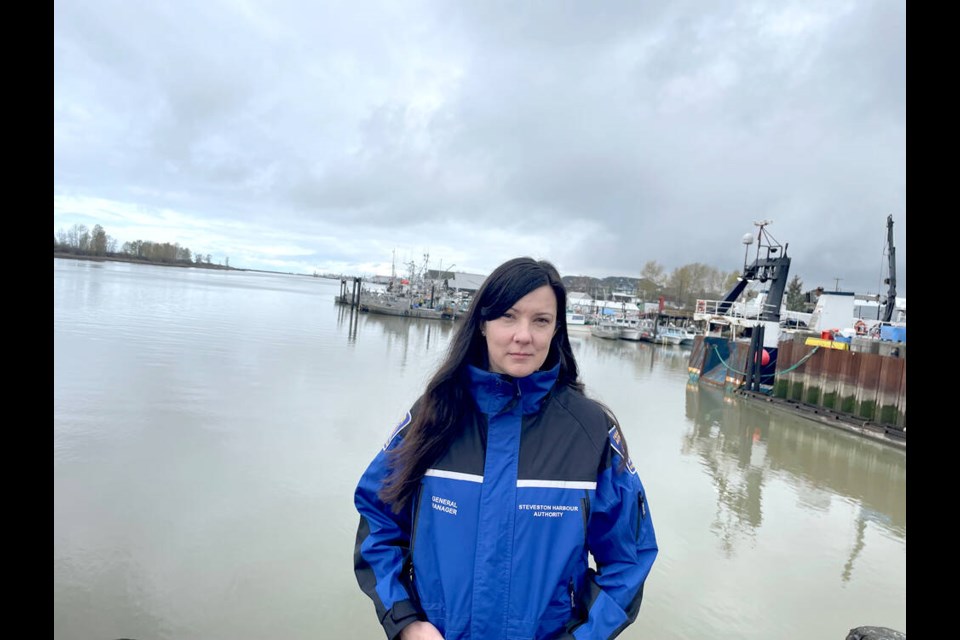“Reverse potholes” are growing underwater in the Steveston Channel.
Like roads that are regularly maintained for cars and trucks, Steveston Harbour Authority general manager Jaime Gusto thinks the channel should be dredged regularly so it’s safe for fishing boats bringing in between 50 and 100 million pounds of seafood a year.
“I don’t understand the difference between a waterway and a roadway. When there are major potholes in a roadway, they’re repaired. These are reverse potholes,” Gusto told the Richmond News. “Nobody wants to care for them.”
With no federal agency to oversee keeping channels navigable, small-craft harbours are left to their own devices to raise money for dredging.
Steveston Harbour is geographically the largest small-craft harbour in the county, located between Steveston Village and Shady island and extending from First Avenue in the west to almost No. 2 Road.
The harbour authority has the manpower to at least advocate for funding – and chip some money themselves, thanks to dredging fees they collect regularly from the businesses using their facilities.
But this isn’t the case for many small-craft harbours that rely on volunteer boards to run them, Gusto explained. For example, the harbour on Malcolm Island is managed by the local Lions Club.
What’s needed is an overall program to regularly dredge the one thousand small-craft harbours across Canada.
This is something that’s been on Steveston-Richmond East MP Parm Bains’ radar for a year.
The Steveston Harbour Authority has three-quarters of the $8.5 million it needs to dredge the Steveston Channel – but they are still waiting for the federal government to kick in its portion, $2.125 million.
The funding, however, still hasn’t been identified and could come from different federal programs, Bains explained.
He hopes it will be in place soon but didn’t have a timeline on when it will come through.
“We’re working hard on this,” Bains told the News. “I’m optimistic.”
Even if and when the funding is in place, the harbour authority will then need to put the work out to tender and get an environmental assessment done, something that can take up to 18 months.
With some larger boats idling for hours waiting for the tide to come up to enter the harbour – located at the bottom of Trites Road – it’s costing money in an industry that relies on quick turnaround.
Seafood off-loaded at the harbour includes salmon, tuna, halibut, herring, prawns and hake.
“Your harbour is useless if you can’t get boats in,” Gusto said.
But, in addition to the immediate need, a long-term solution is needed, as silt will continue to build up and dredging will need to be done on a regular basis.
Bains said he has met with local stakeholders to discuss a long-term solution, that is, having various levels of government commit to regular funding.
Furthermore, smaller-scale dredging every two years at a lower cost might be one solution, Bains said, with funding coming from six or seven partners, for example, Metro Vancouver, the port, Richmond and Delta, SHA and the province.
Given there are hundreds of small craft harbours in Canada, this could be a pilot project that could be implemented in other harbours as well, Bains added.
No agency responsible for Canada’s small-craft harbours
Dredging local channels was the purvey of the federal government for most of the 20th century – from 1901 to 1982.
It was then off-loaded to the Canadian Coast Guard, but in 1998, this responsibility was transferred to commercial users and ports.
This caused a widespread disruption to dredging, according to a brief from the Steveston Harbour Authority.
In 2009, the Port of Vancouver started a local dredging program whereby stakeholders of the 14 channels along the Fraser River could apply for $500,000.
This was barely enough to get the dredging started, SHA notes. In the end, the city and province chipped in $786,000 and the portions of the west end of the channel were dredged.
SHA managed to raise money to dredge the eastern portion, and then later chipped in $590,000 of its own money to finish dredging the western section.
The port’s dredging program ended in 2019, leaving it up to each harbour to fund on its own.



